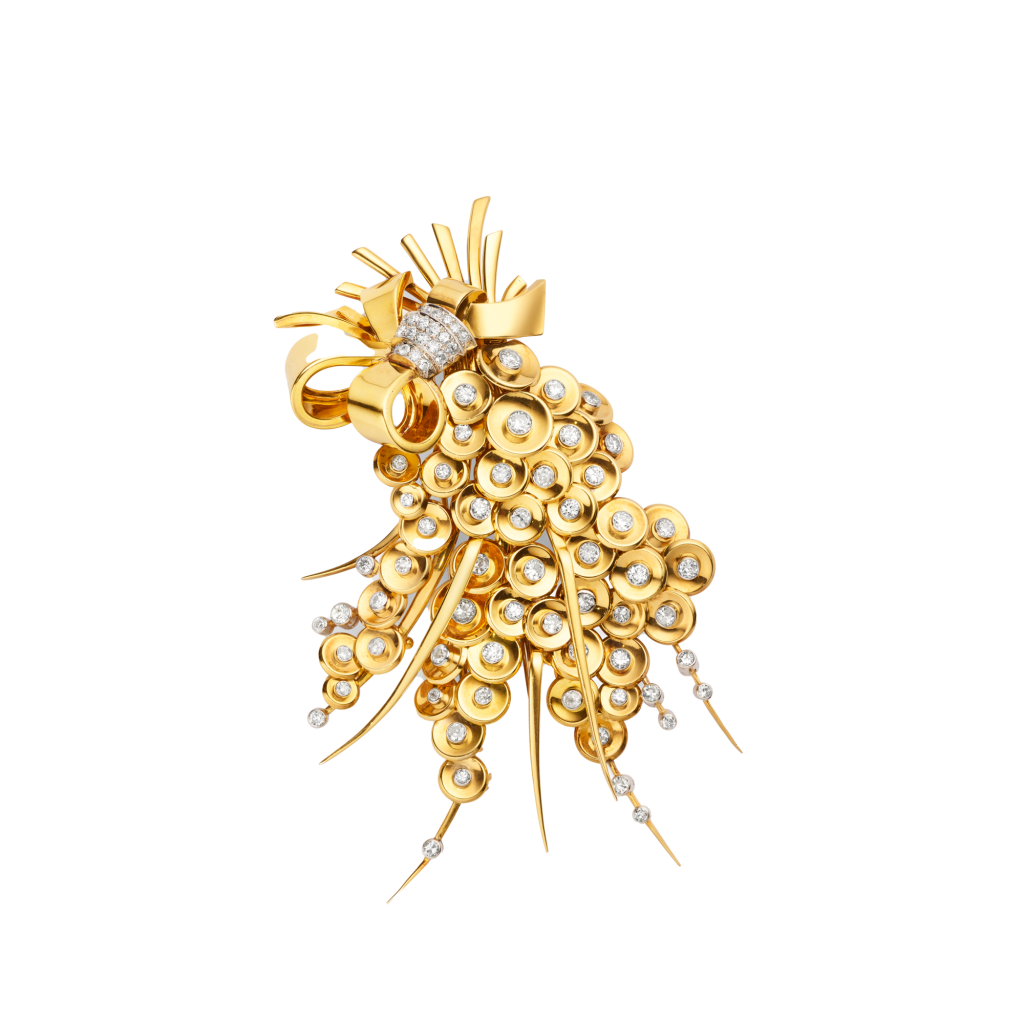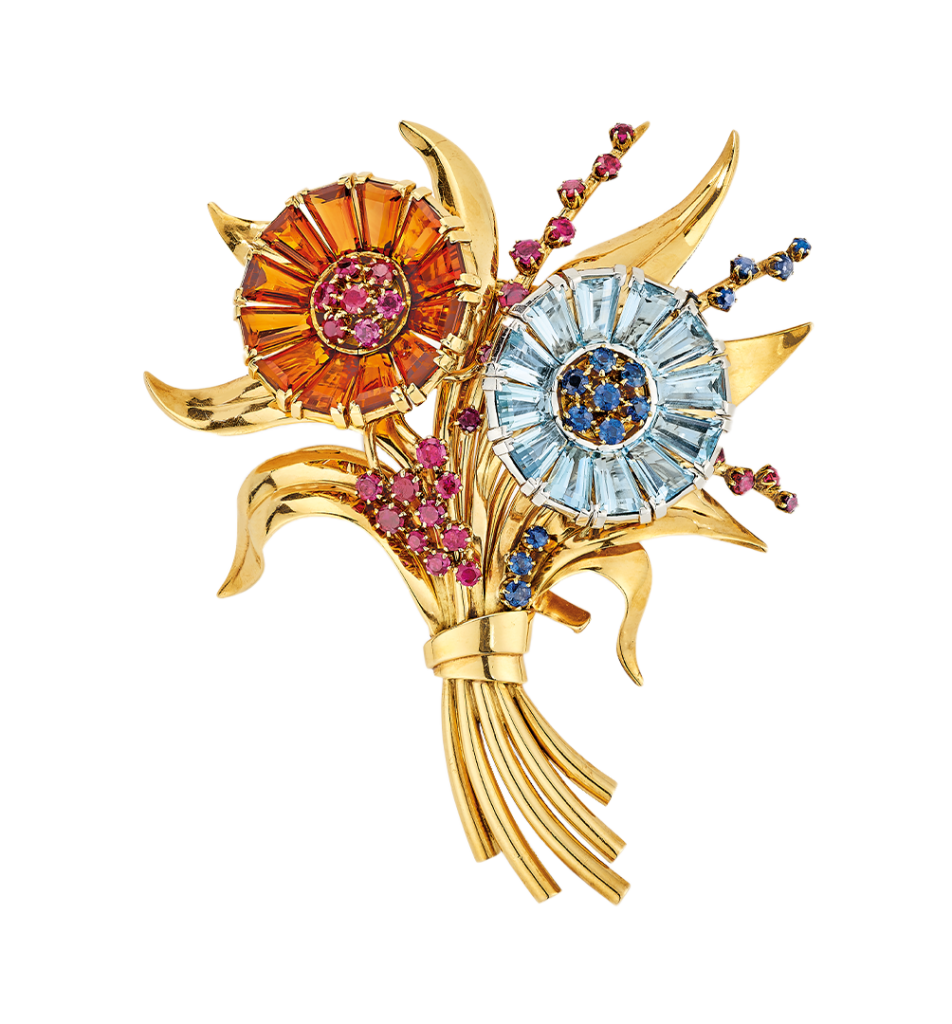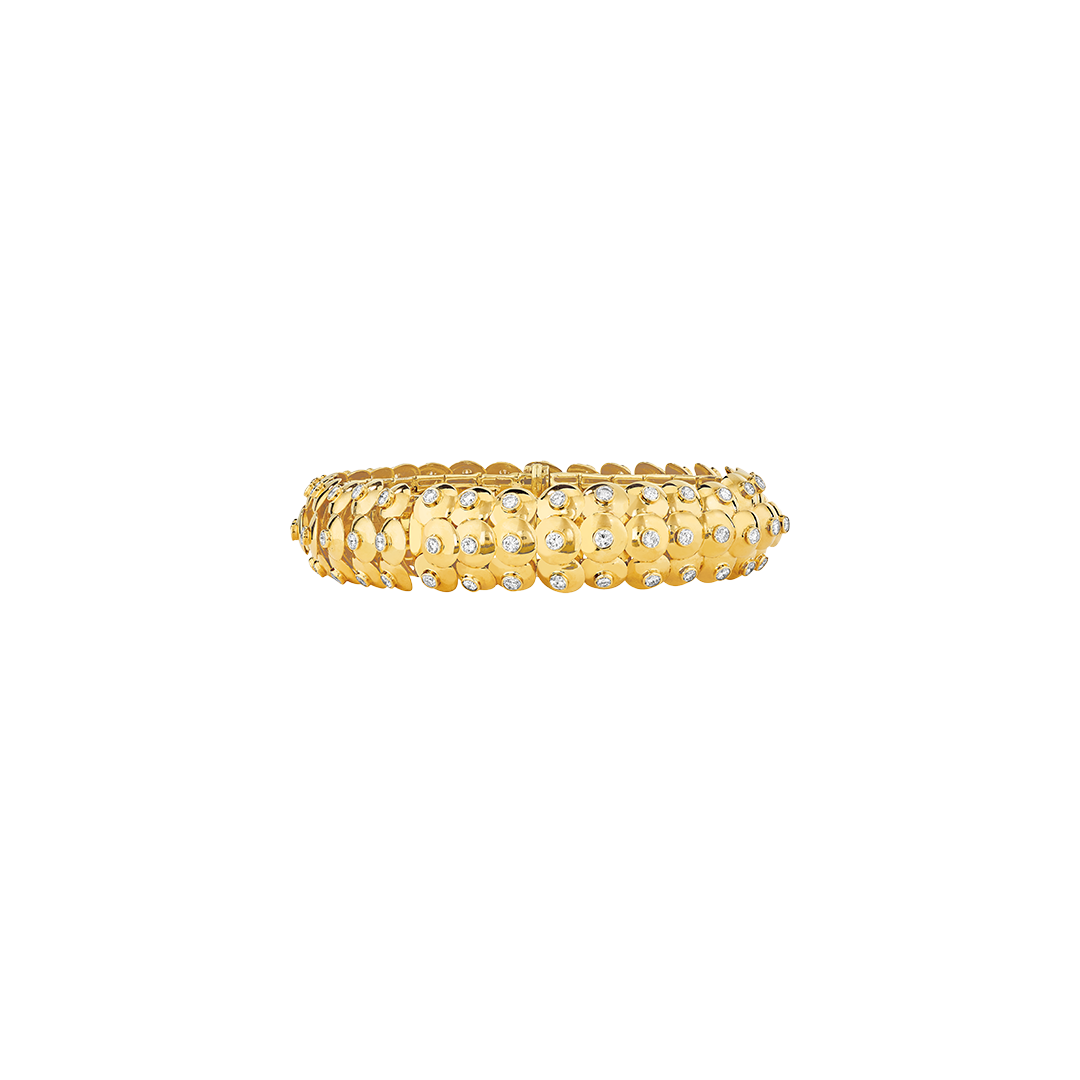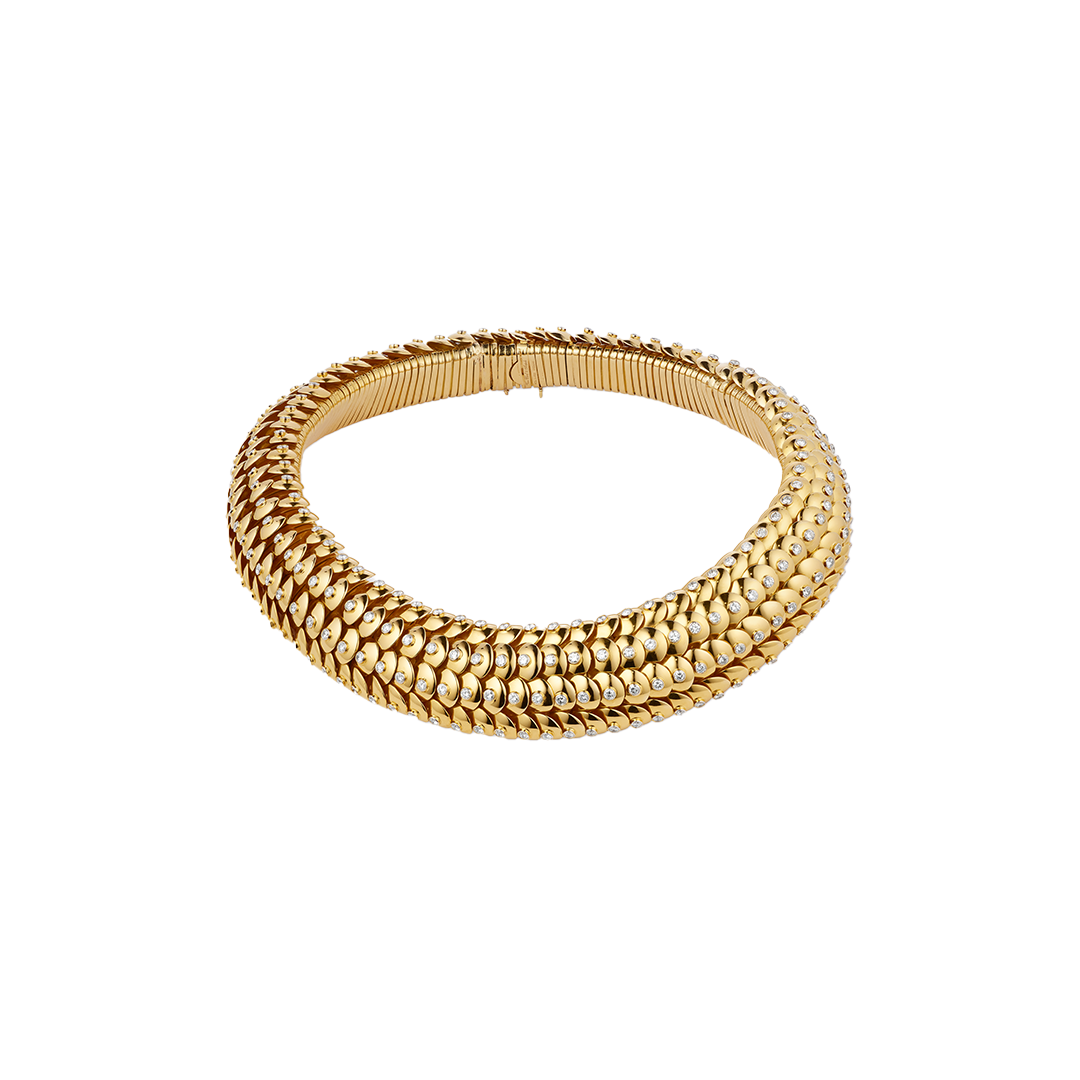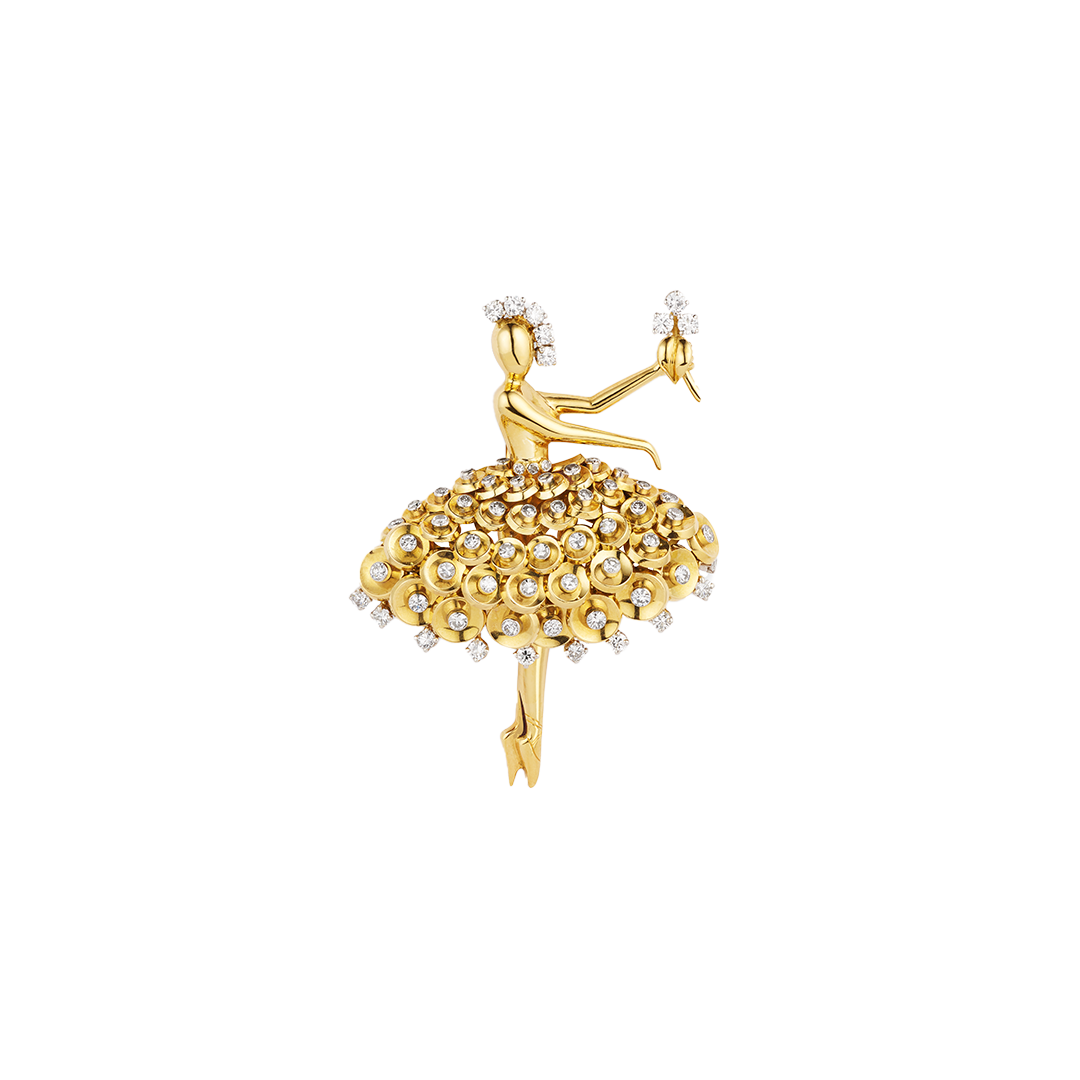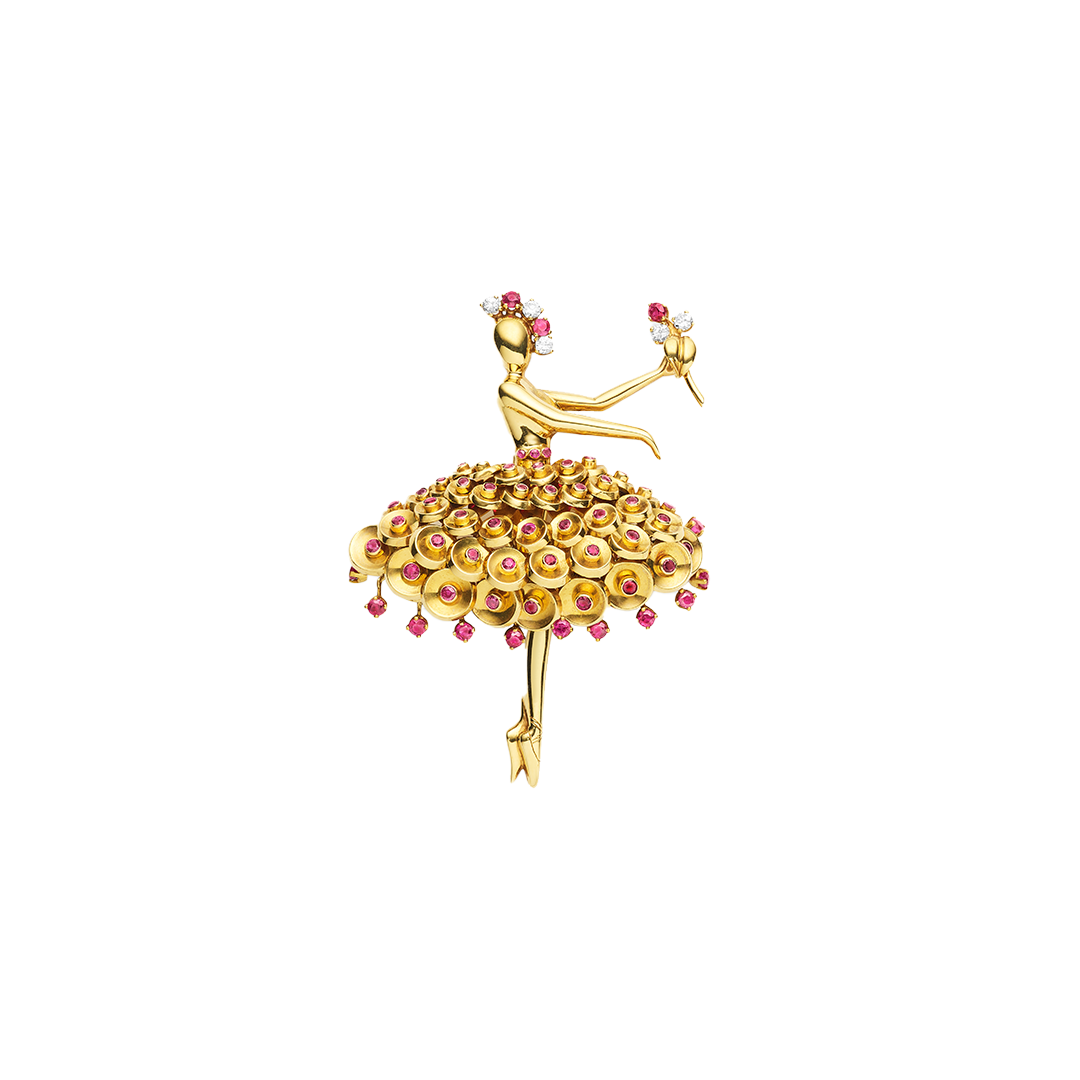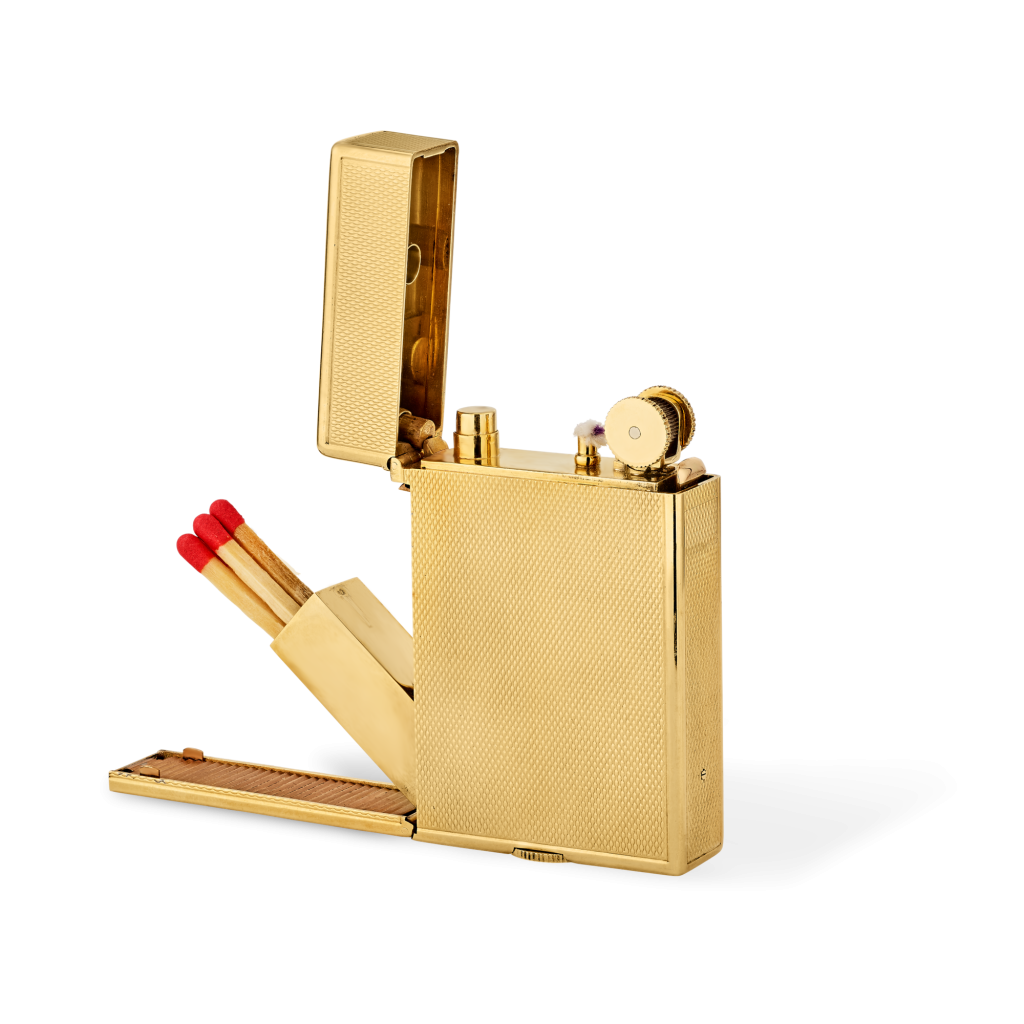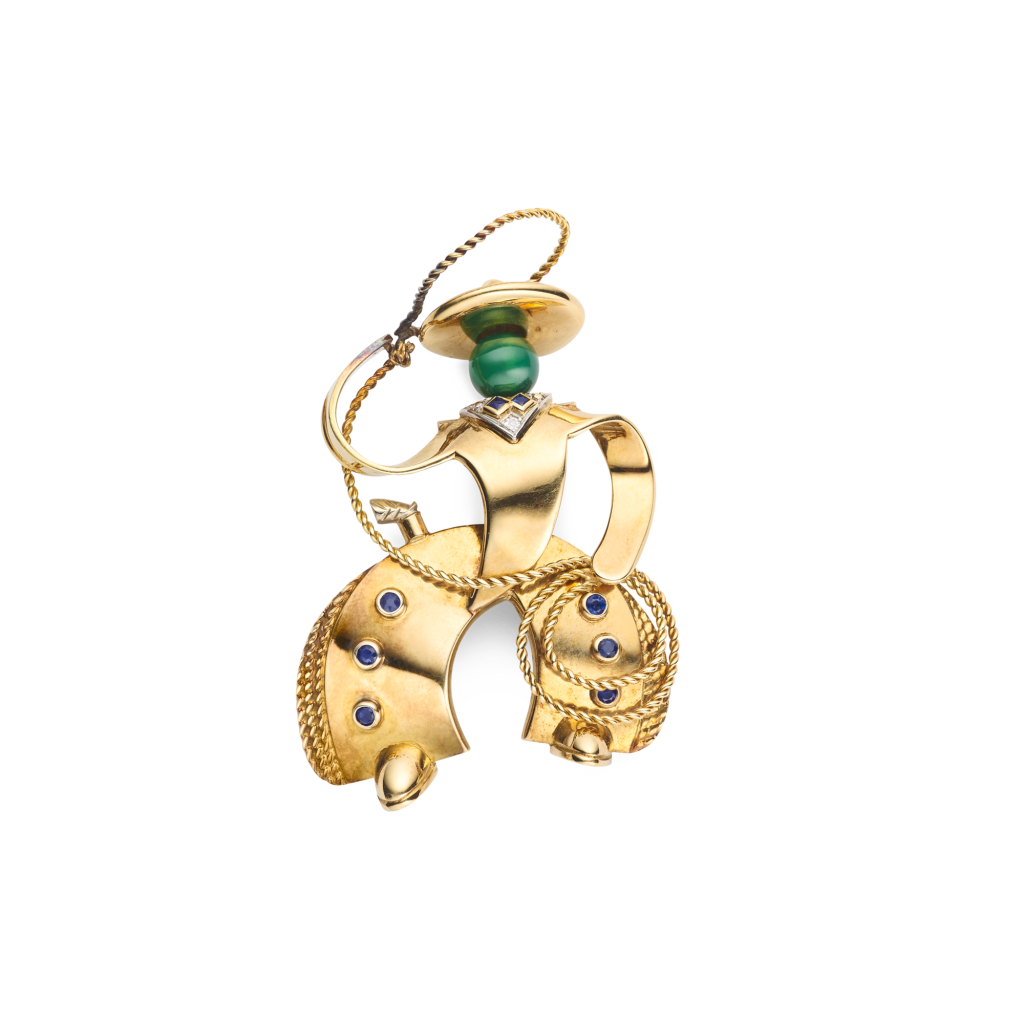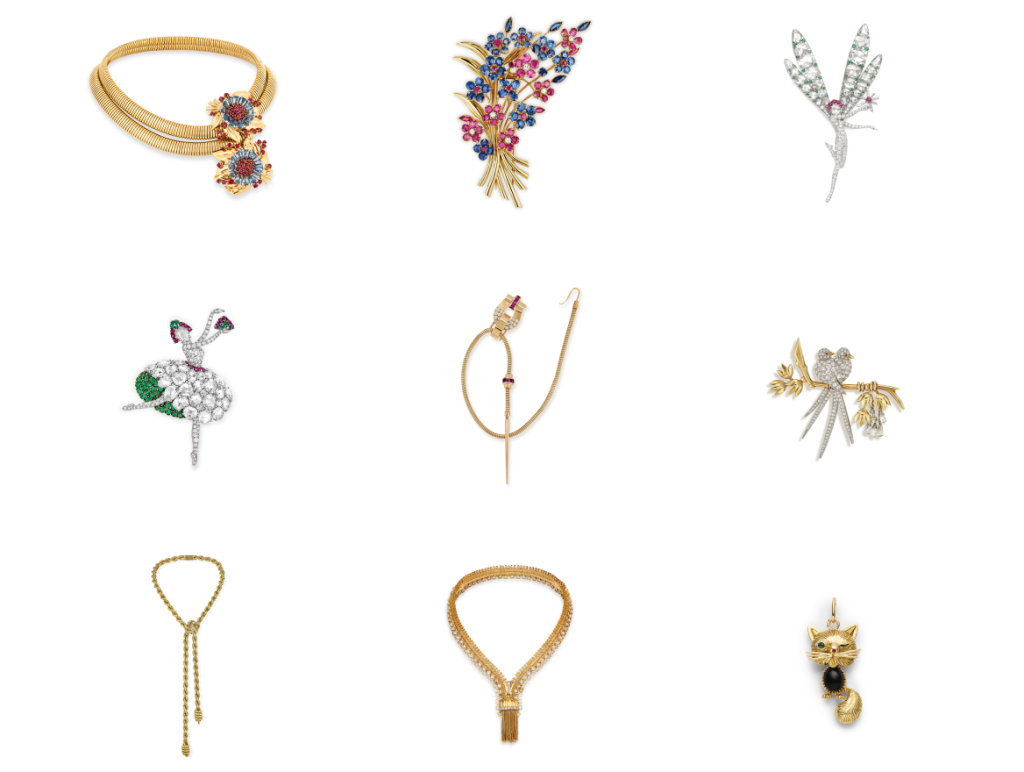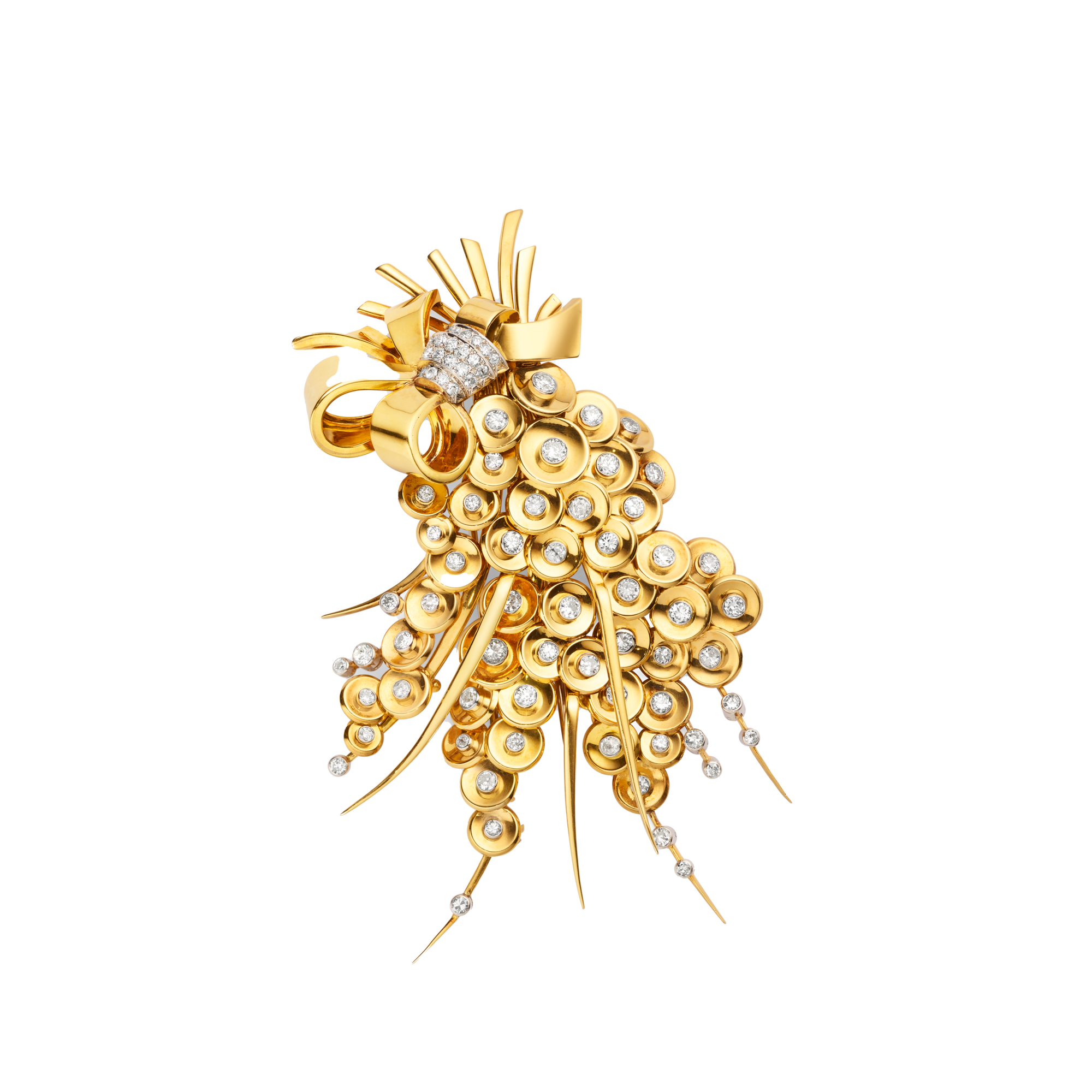
Sequins clip
Creation details
- Creation year 1948
- Usage Clip
- Dimensions 100 × 65 mm
Launched at the end of the 1940s, the Sequins jewelry line blended the two major iconographic themes of the decade: floral motifs and ornaments inspired by the sartorial arts.
In this clip, an abundant bouquet composed of delicate yellow gold stalks and a multitude of small, cascading flowers made of minute, concave roundels of polished yellow gold, similar to sequins, are held together by a ribbon. The heart of each small flower is marked with a claw-set, brilliant-cut diamond, and the bow of the ribbon is enhanced with four rows of diamonds mounted on platinum.
Sequins clip
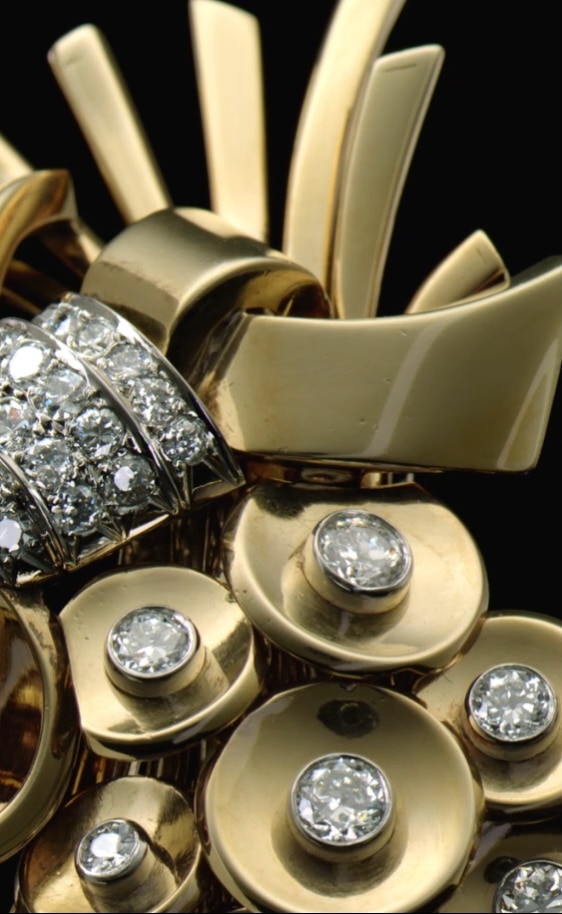
The hybridization of flora and textile ornaments
The Sequins clip demonstrated the ongoing taste for floral motifs, that had emerged in the late 1930s, illustrated notably by the Thistle and Bouquet clips that used gemstones.
During the 1940s, the floral repertory became less formal, combining with various sartorial ornaments. At that time, jewelers drew extensively on the fashion arts: fabric threads, embellishments, and accessories provided a large decorative repertory that was already well-known to eighteenth-century hatmakers. Spurred on by this, Van Cleef & Arpels expanded its iconographic register to include lace, pompons, and ribbons—already present in the 1920s—as well as trimmings, flounces, and sequins.
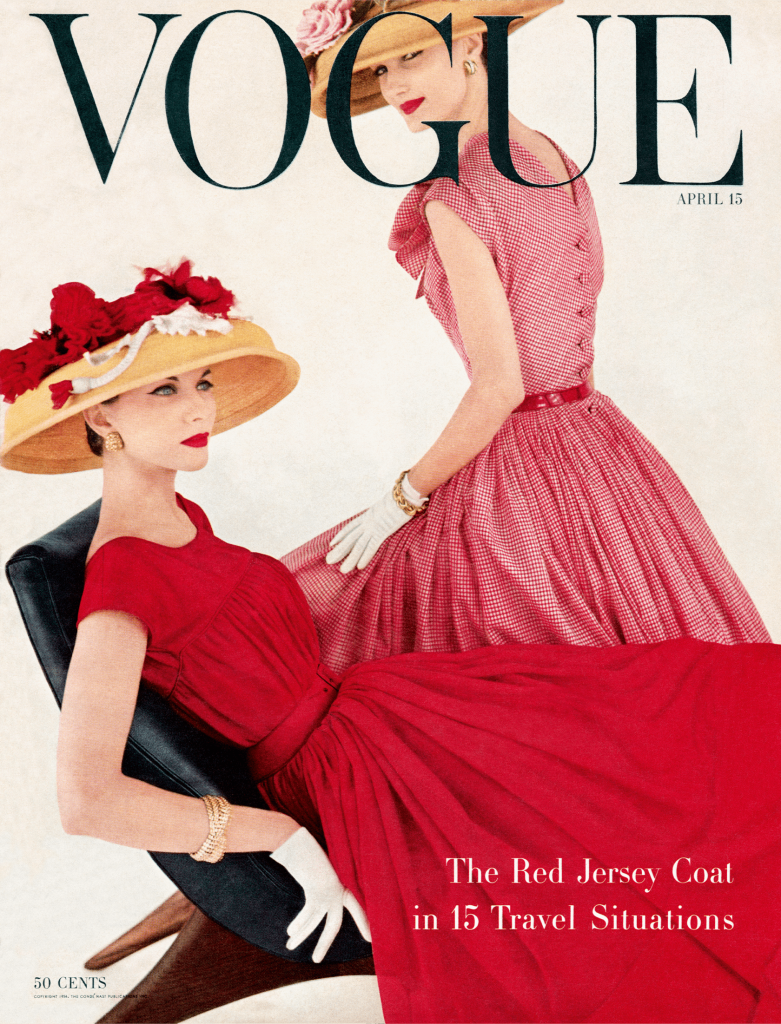
Sequins jewels from 1940 to 1950
The first attempts at using sequins in the jewelry arts were seen in 1940, but the Sequins line was not launched until 1944 with an overlapping double-bangle bracelet. Thereafter, many pieces were created, forming sets: necklaces in 1945; earrings and rings in 1974. Diamonds as well as rubies enhanced the heart of the small convex roundels of yellow gold. In 1946, dancers were dressed in skirts dotted with sequins, this time concave in shape. A few years later, the use of turquoise introduced some chromatic variety. Sequins pieces continued to be made into the 1950s.
Sequins Dancer clip
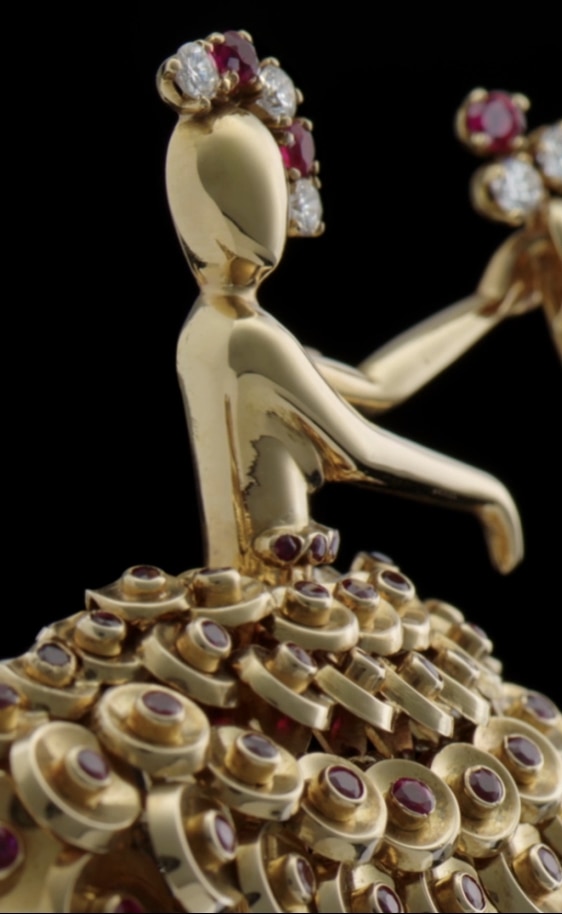
To go deeper
